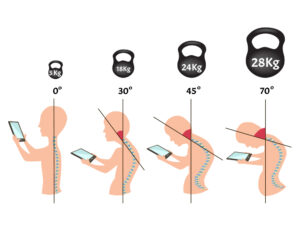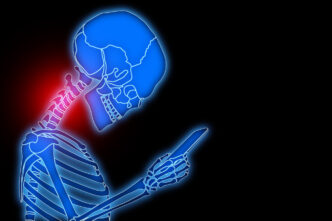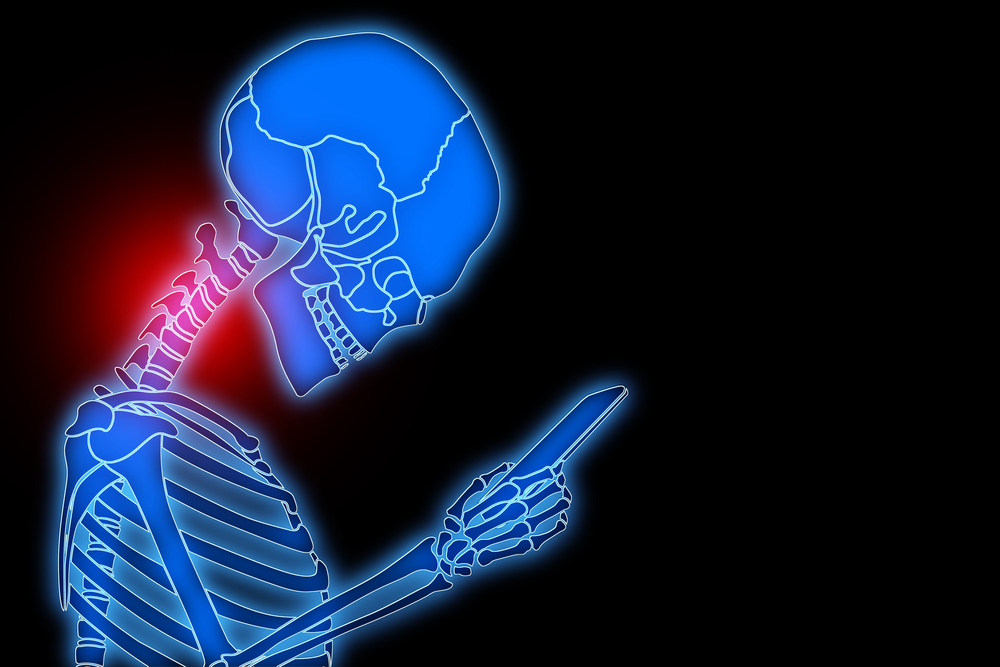Malaysians now spend an average of 8 hours and 17 minutes a day on digital devices. This makes them one of Asia’s top users. But with this comes a hidden cost—a sharp rise in text neck syndrome, especially among teenagers and young adults.
WORDS PANK JIT SIN
 FEATURED EXPERT FEATURED EXPERTDR CHANG KOK CHUN Consultant Orthopaedic, Trauma, and Spine Surgeon Sunway Medical Centre Velocity |
Dr Chang Kok Chun reveals that text neck syndrome is more common now than ever before, especially after the pandemic.
The condition is caused by repeatedly bending the neck forward while looking at screens.
MORE ABOUT TEXT NECK SYNDROME
- Text neck is a form of stress injury. It happens when the head stays tilted forward for long periods.
- This posture strains the muscles and joints in the neck and over time, the stress causes:
- Fatigue
- Stiffness
- Structural damage
Risk Factors
Several local habits increase the chances of getting text neck:
- High smartphone usage, especially among youth.
- Poor posture while working or studying.
- Long hours at desks without proper ergonomic setups.
The Forward Head Posture Problem

- Tilting the head forward by 45 degrees increases neck strain.
- The neck, which usually supports 5 kg, ends up supporting up to over 20 kg!
- This adds over 1,000 hours of strain to the spine each year.
This strain can lead to:
- Neck and shoulder pain
- Headaches
- Dizziness
- Tingling in the hands
“Younger people are especially vulnerable to this condition,” says Dr Chang.
This is mainly due to their frequent and prolonged use of smartphones, tablets, and laptops.
At the office front, poor desk ergonomics at work make things worse. Many Malaysians don’t realize how much damage is being done—until pain starts affecting work performance and sleep.
DON’T IGNORE YOUR NECK PAIN!
Text neck does not just go away. If not treated, it can lead to:
- Herniated discs that, if not treated, can lead to cervical spondylosis
- Frozen shoulder
- Reduced lung capacity
- Compressed nerves in the neck
In some cases, people develop blurry vision, brain fog and poor concentration due to disrupted blood flow and nerve signals.
In severe cases, nerve compression may cause radiating pain or numbness in the arms and hands. It may also lead to paralysis in arms or legs if the spinal cord is compressed.
Needless to say, the resulting pain also affects mental health as disrupts daily routines, reduces productivity, and leads to irritability or feelings of helplessness.
HOW CAN NECK PAIN BE TREATED?
Treatment for text neck often includes physiotherapy, lifestyle changes, and medications.
- The primary aim is to reduce screen time and correct the affected person’s posture.
- Regular neck stretches and breaks help reduce strain.
- With regard to physiotherapy, patients will be subject to manual therapy, posture retraining, and specific exercises to ease tension and improve alignment. While most patients improve within 3 to 6 sessions of physiotherapy, more serious cases need longer plans tailored to their lifestyle.
During the recovery process, one should refrain from sit-ups, lifting weights above the head and spending long hours of typing with a bent neck.
“Rest helps short-term pain, but lasting recovery depends on posture correction and muscle strengthening,” Dr Chang says.
HOW TO CHANGE BREAK HABITS SUCCESSFULLY
Dr Chang notes while everyone knows what causes text neck syndrome, breaking bad habits that lead to this condition can be hard. Furthermore, the modern workplace keeps many people glued to their screens.
Still, he urges people to start small. “Fix one habit at a time. These small changes build up over time.”
For individuals who use screens for long hours daily, here’s what they can start doing today:
- Hold their phone at eye level.
- Sit upright with feet flat on the floor.
- Adjust their monitor so their neck stays neutral.
- Take a break every 30–45 minutes.
- Do neck stretches daily.
Seek early treatment if they feel pain. Early treatment makes recovery faster and easier.
| This article is part of our series on bone and joint health. |














